- TOP
- Search Criteria
- Tokyo Design Week 2015(英語)
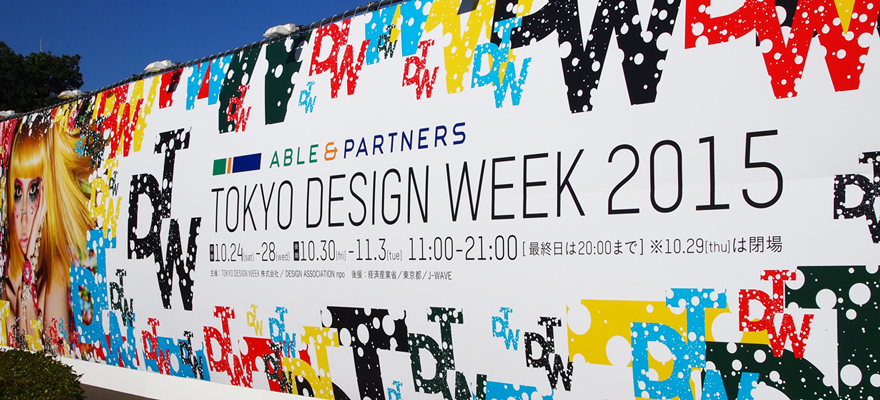
Interact with the future of design, art, fashion, and music at Tokyo Design Week 2015.

Popular artist and comedian Akihiro Nishino created a pop-up atelier and cafe using wooden apple crates.
As I write this, Tokyo Design Week 2015 is going strong outside of Meiji-Jingu Gaien. During this ten-day event, over 100,000 visitors will get their creative juices flowing by getting hands-on with the latest innovations from Japan and around the world in four categories: design, art, fashion, and music. Participants include companies and brands, professionals in their fields, independent creators, and students from universities from across the globe.
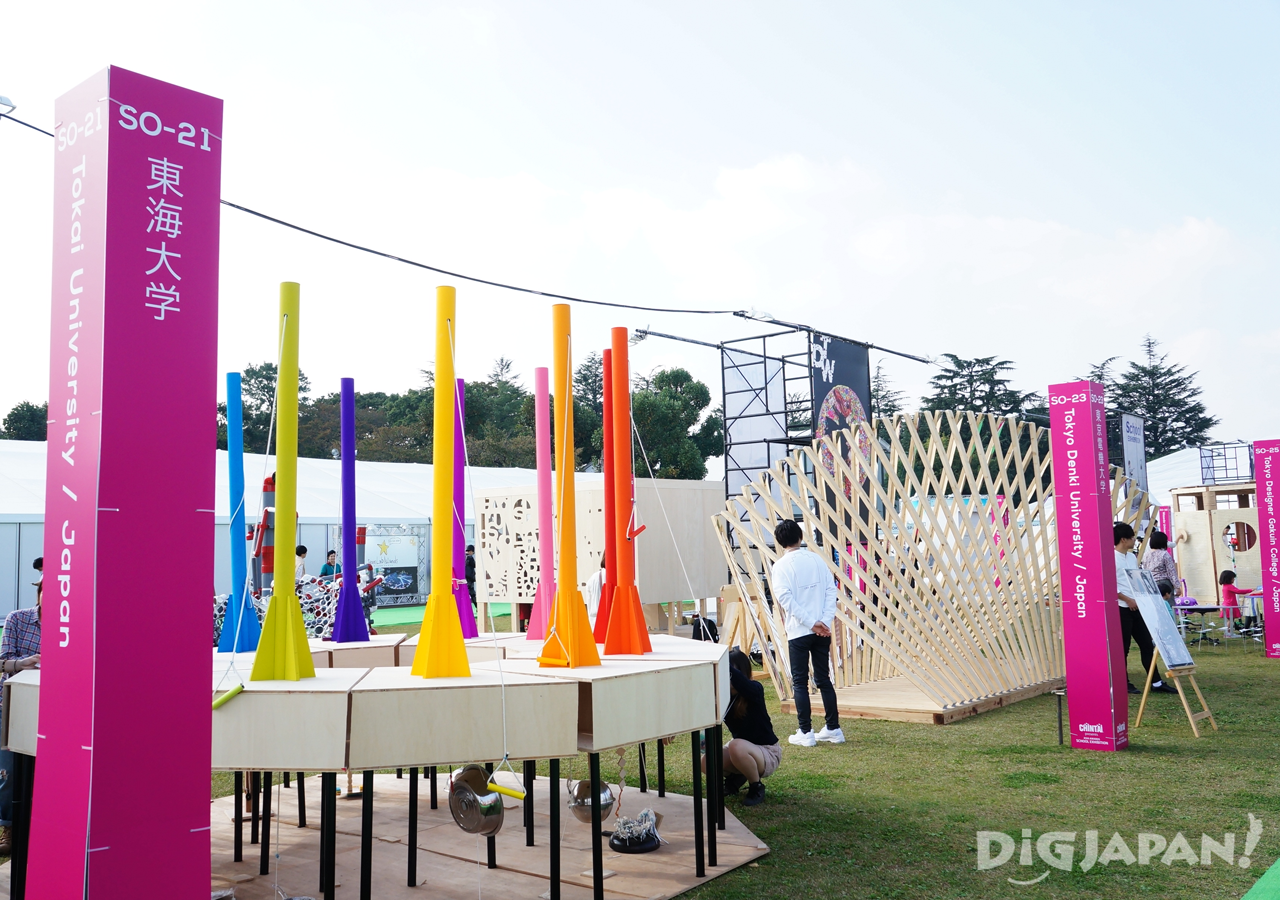
Outside on the green, students representing schools from around Japan create and manage interactive exhibitions.
The theme of this year’s Tokyo Design Week (or TDW) is “interactive.” In the spirit of this theme, many participants have created exhibits that visitors can play with. Others have prepared works that require visitor participation in order to work. As such, visiting TDW is as much about taking inspiration from the artists’ work as it is about guests and artists collaborating to create a one-of-a-kind experience. Below are a few of the awesome exhibits you can check out this year.
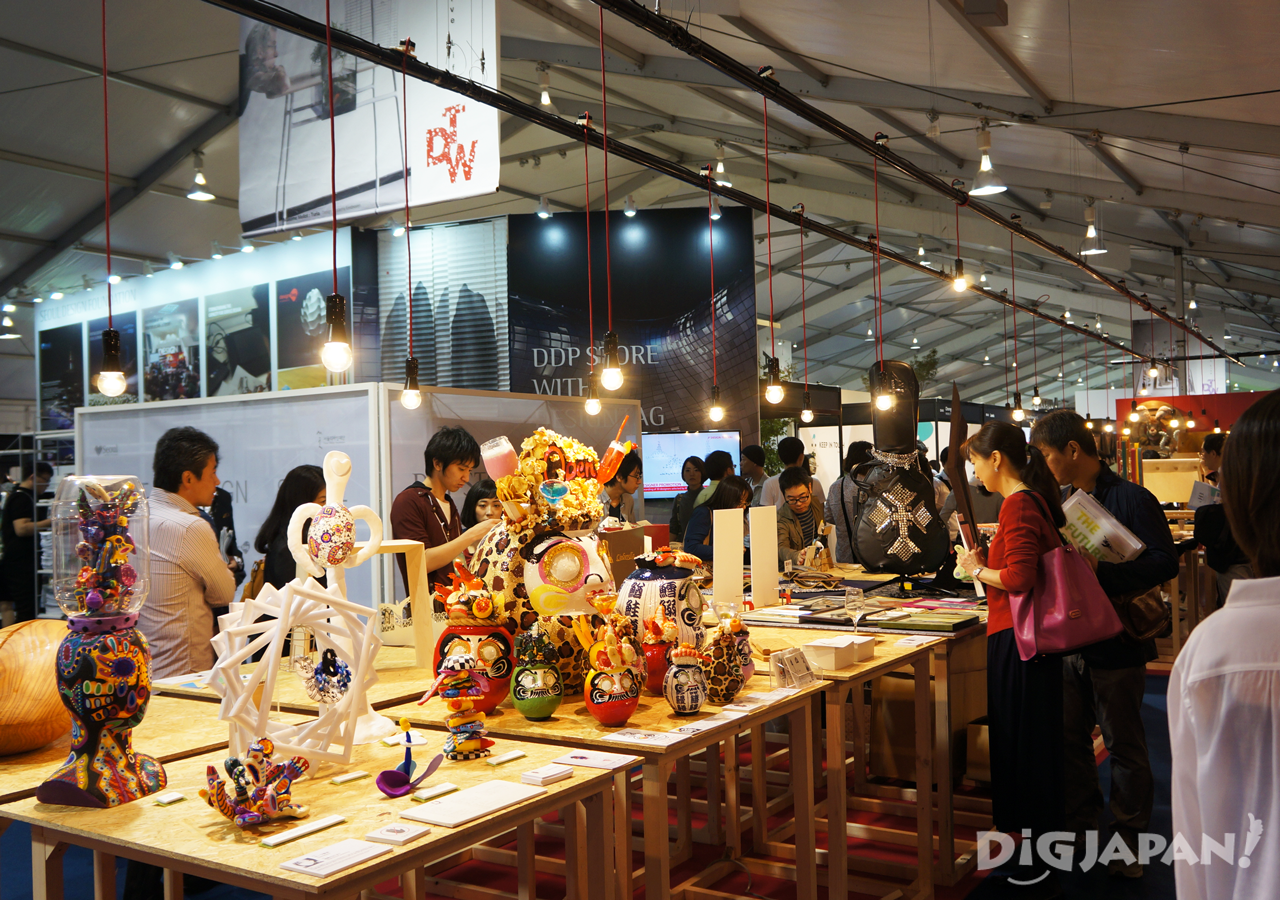

Professionals across industries display their latest art, products, designs, and ideas at the 100 Creators Exhibition.
teamLab Islands
teamLab is a group that unites diverse fields such as art, programming, math, graphic design and more to in order to “achieve a balance between art, science, technology and creativity.” Since the group’s formation in 2001, they’ve held many successful exhibitions in Japan as well as abroad. For TDW 2015, they created an “art amusement park.”

The aquarium version of the art amusement park.
Before I go any further, here’s my full disclosure: I’m actually volunteering for a few days at this event. Last Saturday, I got to spend the entire day helping out at the teamLab Islands exhibit, so I can tell you firsthand how cool this thing is.

Participants were free to color their drawing however they liked.
How the amusement park works: participants choose a drawing and color it in with crayons, adding to the original drawing as they like. The 2D drawing is scanned and projected as a 3D object onto a special screen. The creator can then interact with their drawing—as well as the drawings of other artists—by touching it on the screen. There are two virtual “play parks” at this year’s TDW: an aquarium and a town. Outlines prepared for the town can be scanned and printed out as parts for making a 3D paper model.
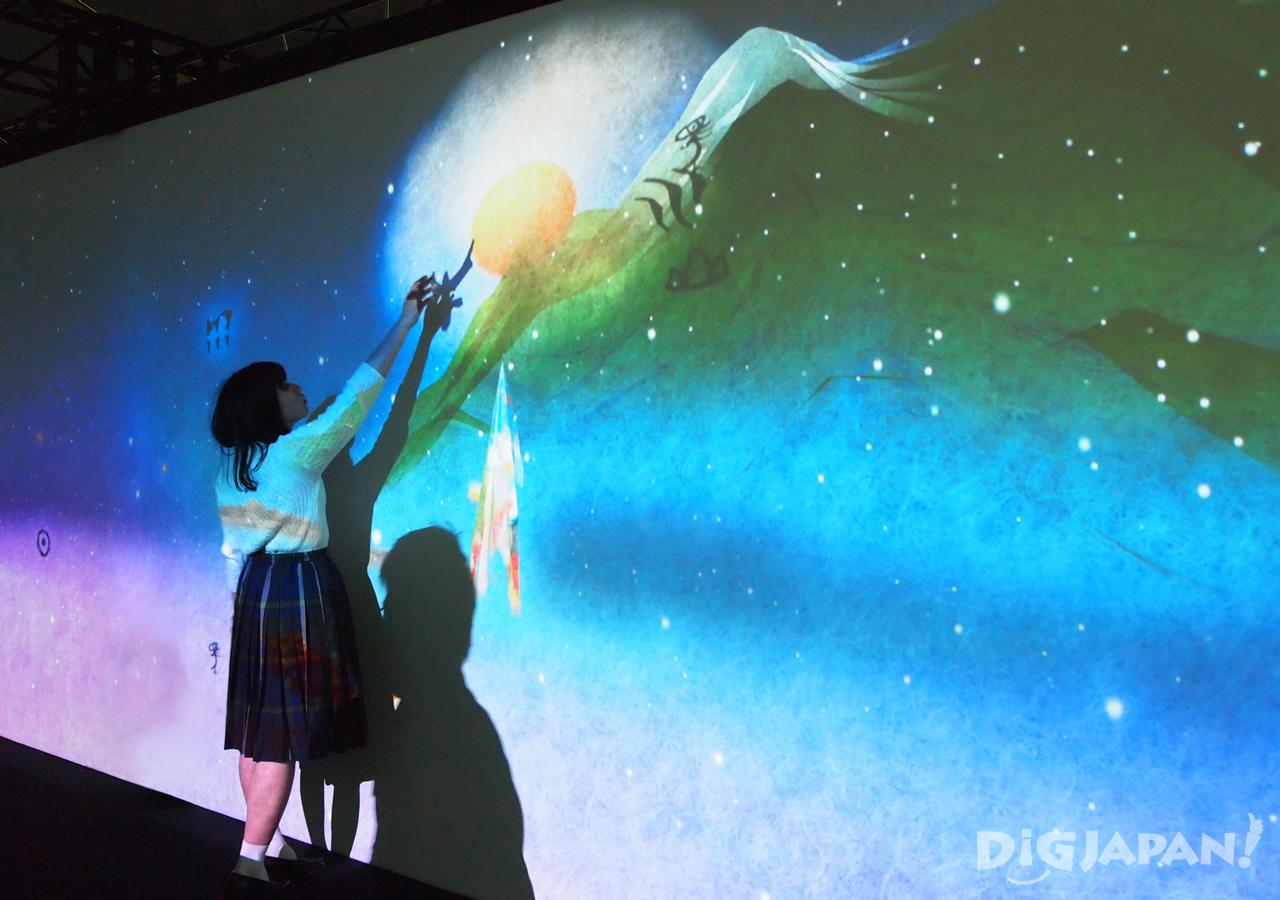
Another of teamLab’s interactive exhibits. Participants touch symbols on the walls to create a story.
Further inside the building are other interactive digital exhibits projected on walls and tables that react when touched to create stories, make sounds, or just be amusing. A particularly popular exhibit was tables around the circumference of which little gnome-like people lived with their very energetic cows. Using wooden props or your hands, you can interact with these little guys.
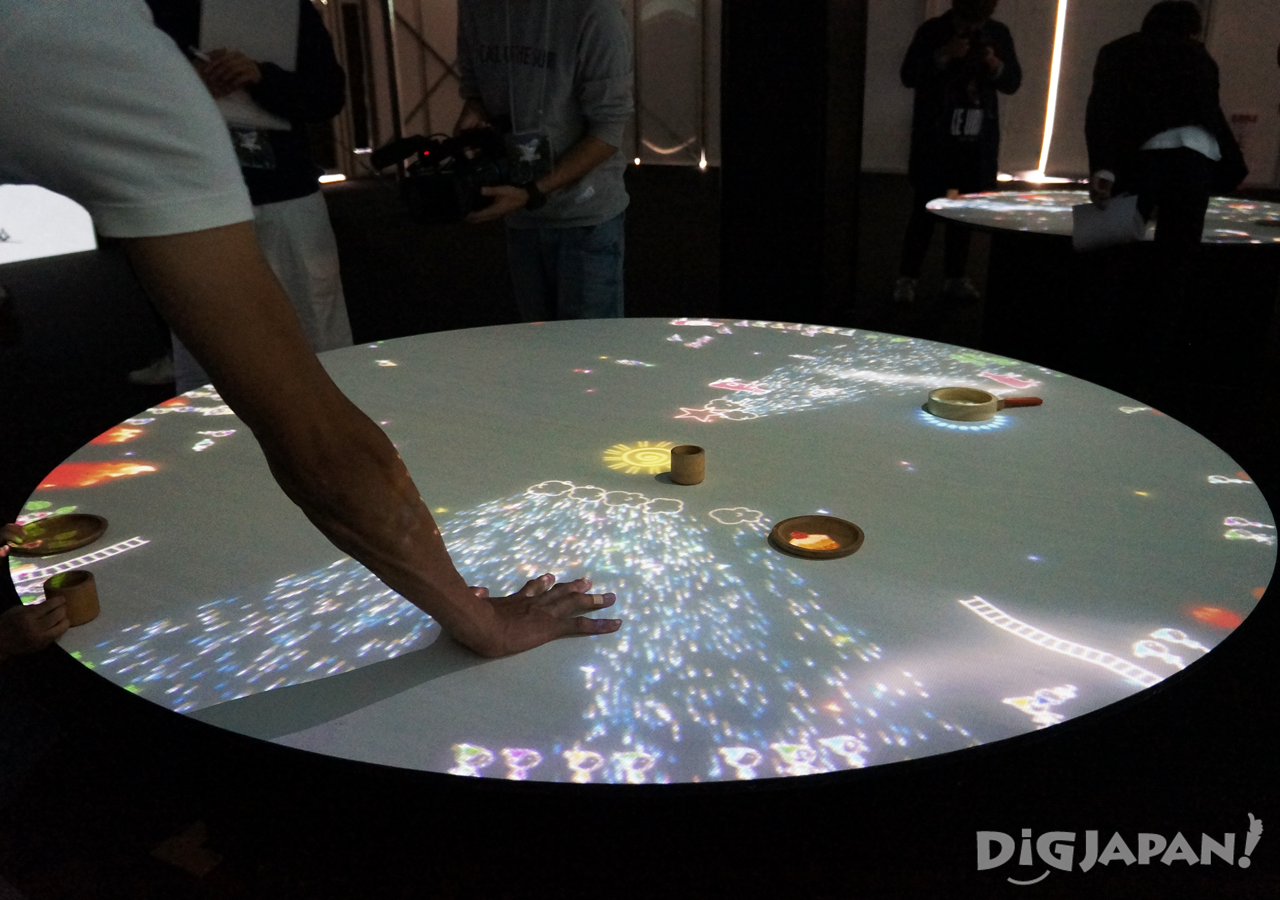
The gnome table by teamLab.
This exhibit is technically for kids, but a lot of the grownups (and volunteers!) were just as into it as the younger visitors. For lack of a better word, it was heartwarming to see adults and kids sitting next to each other on tiny blue stools, both absorbed coloring in their fish or car. Also, more than one grownup remarked that they wanted gnome-tables for their homes. I mean, who wouldn’t?
Container Exhibitions
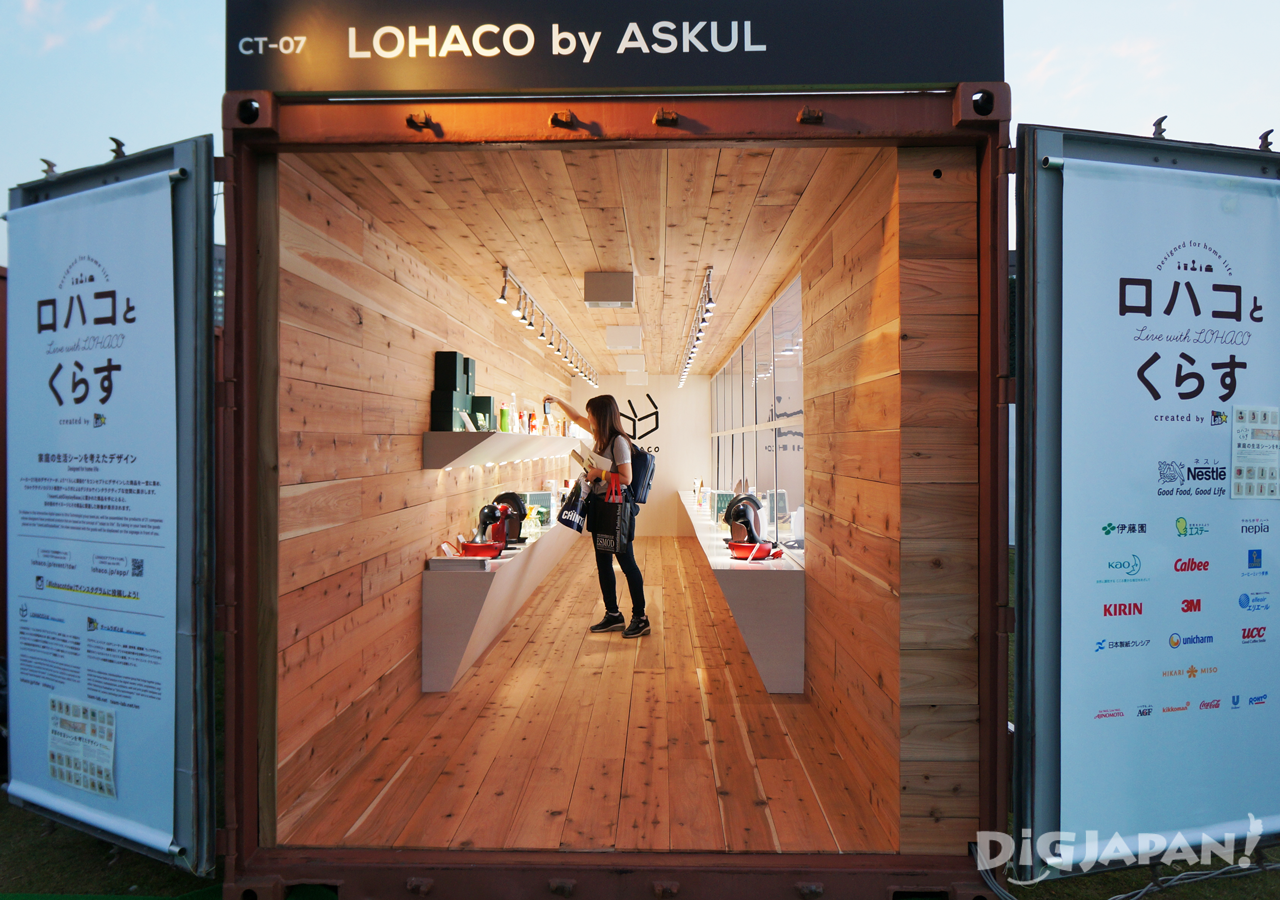
One of the containers from the container exhibition section of Tokyo Design Week 2015.
When you first enter the TDW exhibition area, you’ll notice that there are several giant cargo containers sitting off to one side. A TDW innovation, these containers are used as mini independent exhibition spaces that give the exhibitor complete control over the appearance and layout of their presentation. The presenters work wonders with the small space to promote their brand or products. Even Instagram got in on the game this year with a container designed for taking selfies. Participants are encouraged to share the pictures they take here and in any of the other areas on Instagram using the hashtag #tdw2015.
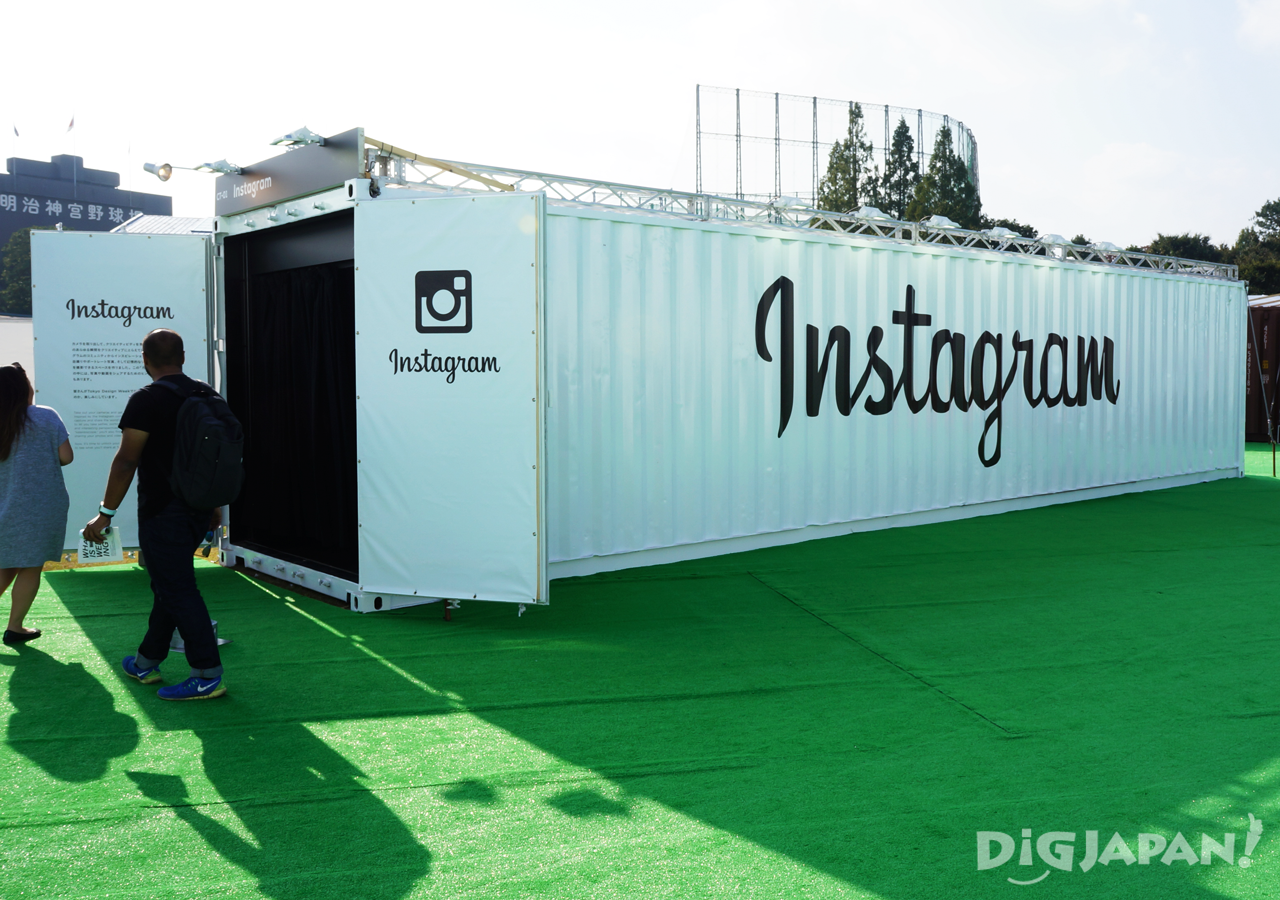
The Instagram Container.

Inside the Instagram container were a variety of mirrors to distort your picture.
My favorite container was called “WHAT IS WEDDING?” produced by a wedding planning company called Crazy Wedding. The premise of the container is simple yet moving. To understand its significance, though, a little background on Japanese weddings is in order. There are quite a few rules about how weddings are done in Japan. While this probably isn’t surprising for ceremonies held at temples or shrines, the policies of many wedding halls used for the popular “white wedding” style result in a lot of cookie cutter ceremonies. For example, it can be difficult for a bride to request a father-daughter dance as it’s not a common practice in Japan. (Dancing really isn’t a thing at weddings here in general.)
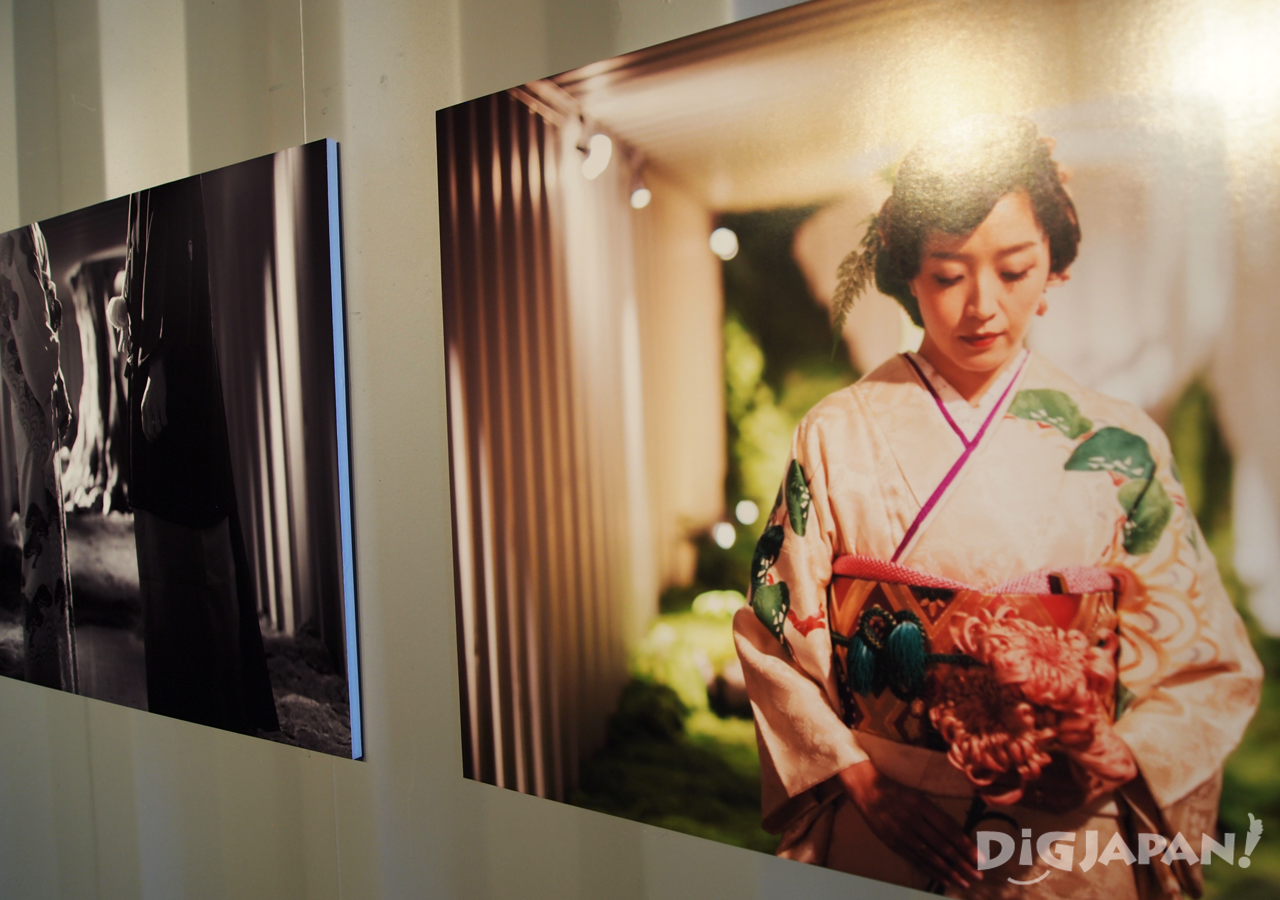
Pictures of the participants hung on the walls in the container.
Crazy Wedding believes that nothing and no one should get in the way of a couple’s self-expression on their big day and designed their container to prove it. Waiting for visitors inside is a large tree growing up out of the container and a swath of moss-covered ground. Probably not the first location that comes to mind for a wedding, but it’s surprisingly apt. Both the moss and the ground remain separate entities even as they come together, enhancing and influencing each other just as do partners in marriage. Kind of sweet, right?

Inside the Crazy Wedding container.
Super Interactive Robot Museum

Musical Mechanical Instruments by KIMURA x TOMOAKI YANAGISAWA.
It just wouldn’t be a design exhibition in Japan if there weren’t any robots. As I was passing through this exhibition hall, I got to see a part of a MMI (Musical Mechanical Instruments) demonstration by KIMURA x TOMOAKI YANAGISAWA.
I unfortunately didn’t get to see this one myself, but one of my coworkers stopped by to meet ASUNA, the android built by Tadashi Shimaya. This is ASUNA’s second time at TDW. While I don’t have a problem with robots generally, if I'm being honest ASUNA kind of gives me the creeps. I have to give her some credit for that awesome side-eye, though.
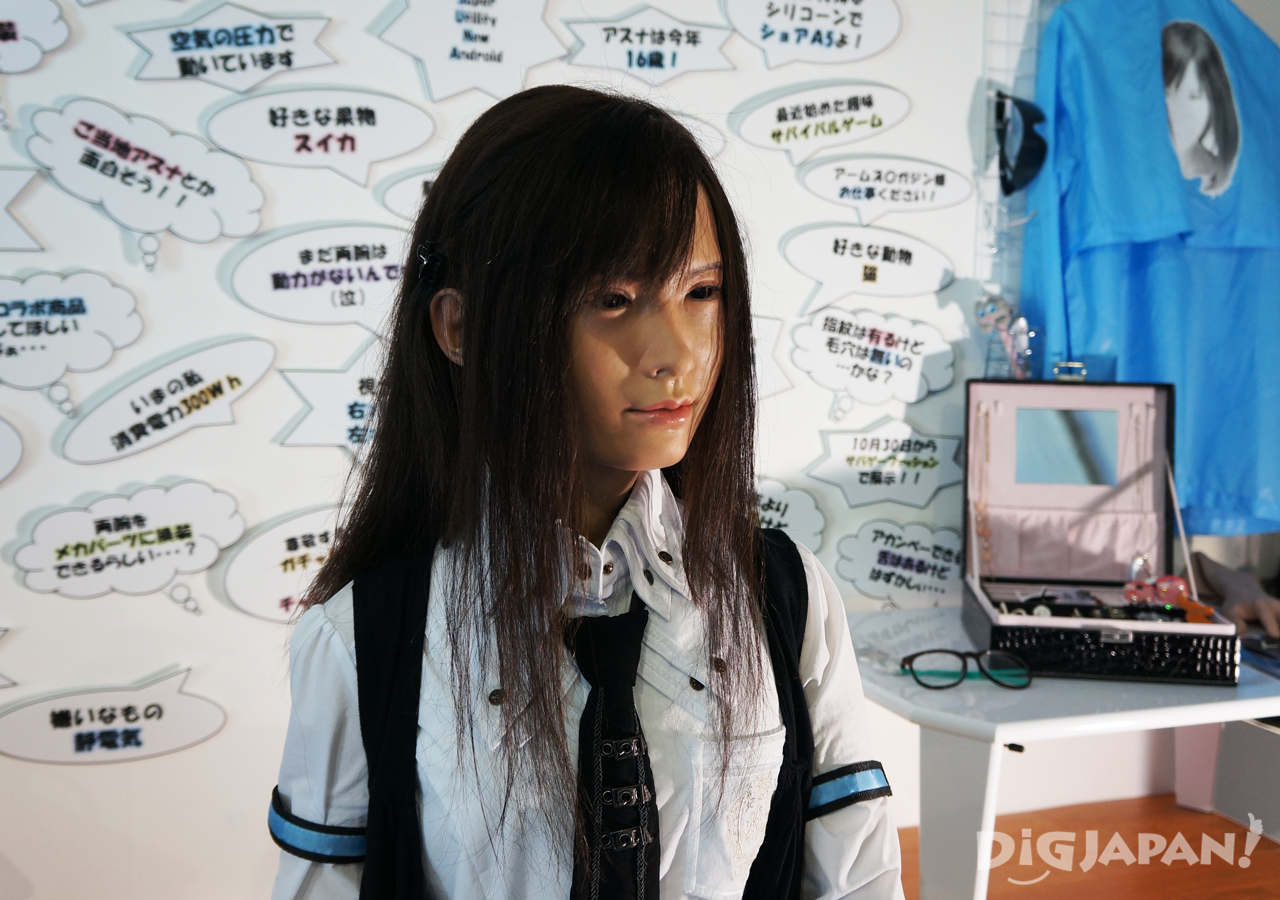
ASUNA is a lifelike android built by Tadashi Shimaya.
In addition to these exhibits and so many more, there are also performances during the day, every day on the main stage, which happens to be flanked by delicious food vendors in case you’re hungry.

There are performances every day at Tokyo Design Week 2015.
One note of caution: if you do decide to go to TDW, please bring a warm jacket or fleece. The sun is going down earlier these days, and it can get pretty cold even inside the exhibition halls. Hope to see you there!
Information
Address
2-3 Kasumigaoka, Tokyo 160-0013 Meiji-Jingu Gaien Mae
Dates
First session Oct. 24 - 28
Second session Oct. 30 - Nov. 3
※Closed Oct. 29 for construction
Hours
11am - 9pm (8pm on last day)
Access
7 min walk from Shinanomachi Sta. (Chuo-Sobu Line)
7 min walk from Gaien Mae Sta. (Ginza Line)
5 min walk Aoyama Ichome Sta. (Ginza, Hanzomon, Toei Oedo Line)
Price
Adults: 3,000 yen
University students: 2,000 yen
High school students: 1,500 yen
Junior high school students: 1,000 yen
※Parents visiting with their children receive a 1,000 yen discount
※Adult admission is reduced to 2,000 yen after 6pm on weekdays
Website
Tokyo Design Week 2015

Liked this story? Like DiGJAPAN!
on Facebook for daily updates!
THIS ARTICLE IS BASED ON INFORMATION FROM 10 28,2015 Author:Rachael Ragalye













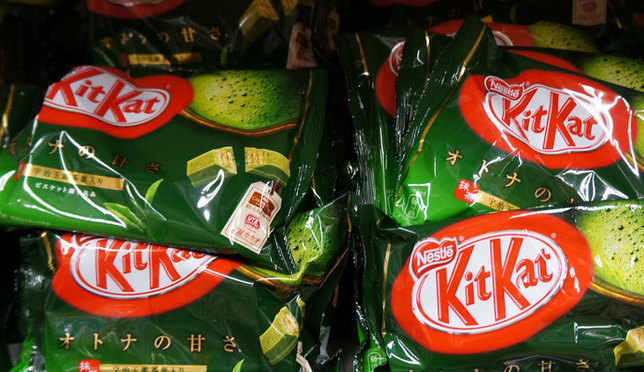
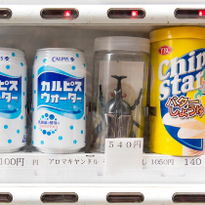

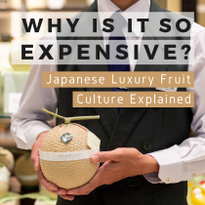





NEW COMMENT | 0 COMMENTS
Open a DiGJAPAN!
account to comment.
Open a DiGJAPAN! Account